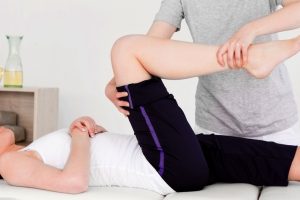 There are two types of recovery, normal everyday recovery from a workout and long-term recovery from an injury. The following explains both and reveals the best way to handle a recovery.
There are two types of recovery, normal everyday recovery from a workout and long-term recovery from an injury. The following explains both and reveals the best way to handle a recovery.
Normal Recovery From a Workout
Recovery from training is becoming recognized as one of the most important aspects of physical activity and overall wellness. As we sort through the myriad recovery strategies and their varied levels of scientific support, it’s important to remember that both scientific and anecdotal evidence point to the value of an appropriate recovery plan to encourage adaptation, wellness, and performance. We have all experienced sore muscles and joint stiffness a few days after a workout. This is just recovery after a workout. Our bodies need time to recharge with a period of recovery. If you have worked your muscles too hard the recovery period helps your body build back after the hard day in the gym. It’s recommended to rest for 72 hours before working out the same muscle group again. This gives your body the time it needs for muscle recovery and growth without risking injury from over-training or under-recovery. A study showed that being active after muscles have been pushed to fatigue during a hard workout will help them recover faster. Plenty of low stress and low load movement is key to speeding up recovery. In addition to speeding up your recovery after a tough workout:
- Drink a lot of water. Hydrating after a workout is key to recovery.
- Get enough sleep. Getting proper rest is easily one of the most effective ways to recover from any form or degree of physical exertion.
- Eat nutritious food.
- Massage.
Active Recovery After an Injury
This type of recovery takes much longer and is a much more grueling process. The most common athletic injuries are the ones that creep up on us like using repetitive motion, improper form, and imbalance. We may not even notice our poor form until we start to feel pain. Sharp and shooting pain is a sign of an injury. If not addressed these injuries can have lifelong effects. If you sustain an injury, a proactive approach to recovery is key.
- Contrast Therapy for Recovery – Contrast therapy is also known as immersion therapy or hot/cold immersion. The treatment involves exposing the body to a contrast of temperatures, i.e. hot then cold, and is typically seen with ice baths and spas or hot and cold showers. An easy way to increase blood flow is by using contrast therapy. One to use at home is your shower. Contrast therapy works by applying contrasting effects to the body. The application of contrasting temperatures exercises your arteries, veins, and lymph system. Hot water expands vessels and fluid passages, while cold water constricts them. This pumping increases circulation and encourages the delivery of nutrients and oxygen to the tissue.
- Using Downtime Nutrition and Quality Sleep for Recovery – All are huge factors when it comes to recovery. Without proper nutrition, we can struggle with sleep and our activity level. Maintaining healthy eating habits can strengthen our immune system, stabilize our mood, and improve medical conditions like high blood pressure, cholesterol, and diabetes. It sounds cliche, but if our bodies do not have the right nutrients, they will not have the building blocks to recover, grow and get stronger. If your diet is lacking, your gain in the gym will not be at its peak. Quality downtime is essential to keeping your body healthy. Our bodies need time to rebuild our muscles and recharge our energy reserves.
- Encouraging Blood Flow for Recovery – Our bodies are built to move. Movement is healthy, movement is life. Deep moist heat, Hydrotherapy, or Ultrasound can supply comfort and blood flow to enhance and aid healing.
- Instrument-aided Massage, Manual Joint Techniques, and Therapeutic Taping – These can further aid the body’s management of blood flow. Studies have shown that therapies such as massage, percussion therapy, and compression techniques can promote blood flow to speed the process up. Increased blood flow helps deliver important nutrients and minerals to your muscles.
While each method has its benefits, using all of them can be a powerful combination. Our body’s maintenance is sleep, nutrition, active rest, and increased blood flow. It is important to take note of your own body’s reminders so you can avoid injury. Start incorporating active recovery into your daily routine so it becomes second nature.
—
TPS Recovery Massages
Recovery massages are designed to reduce downtime post-workout and performance, while also decreasing fatigue, preventing injury, and reducing delayed onset muscle soreness (DOMS). The pressure used may vary between lighter for drainage and deeper to release muscle tension.
> Learn More
Contact Us (754-777-9965) For More Information -or- Schedule An Appointment
—
 About TPS Massage
About TPS Massage
TPS Massage focuses on professional athletes and weekend warriors. We have years of training and experience working with pro athletes and weekend warriors. We use a variety of methods and techniques such as MAT™, Deep Tissue Massage, Cupping, Kinesio Taping, and more, to attend to all your body needs for a full recovery and outstanding experience.
> Learn More
